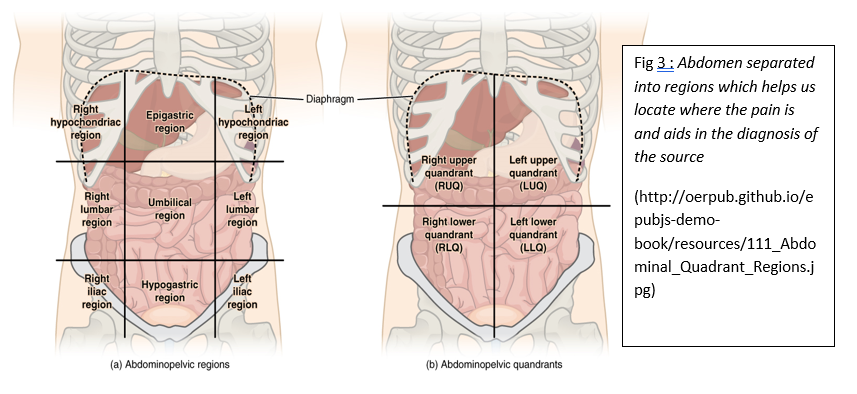Common cancers and how to spot them
By Risheen Mukherjee, 4th Year, MBBS
Cancer is not one disease, so there is no single drug or therapy that cures all cancers. Our interest in the molecular biology of various malignancies has allowed us to classify and treat cancers like never before. But prevention is the best cure, as the saying goes, and that is what we are going to tackle here in this post. Prevention of any disease can be broken down into 2 parts - eliminating the risk factors, and if that's not possible, detecting the disease early. Vigilance is key in safe-guarding our way of life, and therefore, the only means of protecting oneself is by knowing what to look for, particularly when it comes to cancers. Please note that this post is not meant to be exhaustive and is to encourage you to see a doctor if you feel you have these symptoms.

Let us talk about a common phenomenon among people of any age, but most commonly in children - lumps in the neck and surrounding regions. Depending on their position, these could be a range of different pathologies, but what we are looking for is swollen lymph nodes, or as a medical professional would call it, lymphadenopathy.
Lymphadenopathy, as ominous as it sounds, could be from something as harmless as a recently acquired infection, or a chronic infection like tuberculosis, certain autoimmune diseases like Systemic Lupus Erythematosus - which is admittedly a very rare occurrence - or it could be the result of an aggressive malignant infiltration of a cancer located somewhere in the vicinity of your throat, like the thyroid, the larynx, the pharynx, etc. It could also be due to a primary lymph node malignancy - a cancer arising from your lymph nodes - like a lymphoma. If you find a hard, rubbery mass just above your collarbone, chances are you could be suffering from a gastric cancer, i.e.- cancer of the stomach. Of course, lymphadenopathy is not the only symptom if you have any of these diseases, but that is beyond the scope of the common man's knowledge. The point is - if you find lumps around your throat, waste no time in fixing an appointment with your doctor.
In children, if the lymphadenopathy is accompanied by bone pain, then it is a cause of concern. It may be a cancer of hematological origin (cancer of certain blood cells). There will also be bleeding tendencies, with the appearance of bleeding spots on the body, most notably on the gums. The patient will experience fatigue and weakness.
Now, lymphadenopathy need not occur only around the neck, because lymph nodes are everywhere in the body. A swelling in the inguinal region (groin) could be just as ominous - it may be the result of a rapidly spreading ovarian cancer. Early detection is, therefore, key in treating a cancer, which may prove to be fatal if it is identified too late. When it comes to the cancer of the breasts, the most commonly swollen lymph nodes are the ones in the axilla, or the armpit. This is normally accompanied by changes in appearance in the breasts themselves - patients often complain of a mass in the breast tissue when they consult a physician, with puckering of the skin above the mass. In more advanced cases, the patients' breasts may show an ulcer which does not seem to want to heal, but of course, we want to prevent the patient from ever reaching this stage of the disease in the first place.
Of particular concern are swellings which seem to have grown over time, or have seemingly multiplied and have appeared in other regions as well. One must keep track of the changes in their body, and their children's bodies, if a potential malignancy is to be detected early.
Coming to the abdomen, which is packed with several
organs indispensable to life itself, one may find one day that their liver
seems to have enlarged, or that it feels rather painful on touching it. Paired
with a history of chronic alcoholism, and you could easily be facing a cancer
of the liver. If you feel an uneasiness in the upper middle portion of your
abdomen (epigastric region), you
could be suffering from pancreatitis, or worse, pancreatic cancer. Cancers of
the liver may be accompanied by ascites
- distension of the abdomen due to accumulation of excess fluid within the
peritoneum - and also jaundice. These
cancerous organs may enlarge and obstruct your intestines, preventing food from
passing through. You may feel bloated and constipated. Masses in the kidneys
will be felt in the flanks (sides) of
the abdomen, in simpler words, a feeling of fullness in the region. When you
lie down and shift on your bed, you may be able to feel an abdominal mass.
Schedule an appointment with a doctor - it may not be a cancer, but why take
the chance?

If an elderly patient complains of pain in their chest, and if it is a known fact that they have lost all their teeth some time ago, it may very well be a lung cancer. Weight loss indicates the disease is worsening, and this is true for almost all malignancies. As is often with elderly patients, the family members need to be ready for a visit to a doctor if these symptoms appear.
Often, cancers gain the ability to move and affect other parts of the body, which is known as metastasis. Indeed it is the hallmark feature of most malignancies, and it helps us to distinguish a malignancy from a benign lesion. The metastasis may occur to the liver, whereupon it appears knobby and enlarged, or it may occur in the brain and spinal cord. The patient may suffer focal neurological symptoms, or memory loss, changes in personality, etc. One may even feel a pins and needles sensation in the arms and legs (or paraesthesia, occurring as a result of peripheral neuritis), but as a symptom this is quite non-specific and could be the result of multiple disorders that are not related to cancer, so it's best to see a physician about it.
Now, coming to potential risk factors -
Yes, something as 'harmless' as a high fat diet could lead to cancer. Even the Helicobacter that are implicated in causing stomach ulcers can cause gastric cancer. And yes - too much sunlight can be very bad for your skin.
So you see, there are multiple ways we can acquire cancers throughout our lifetimes. As medical research progresses, we learn more and more about malignant diseases like cancer and of course, we learn about their treatment. But nothing can overshadow the importance of taking preventive measures and eliminating our chances altogether. A few lifestyle changes is all it takes - don't smoke, eat healthy, exercise, protect yourself against infections by mustering a strong immune response. These few changes are, honestly, enough to possibly prevent a large majority of cancers and save yourself some exorbitant hospital bills.
Reference- Kumar & Clarke Textbook of Medicine,9th edition

